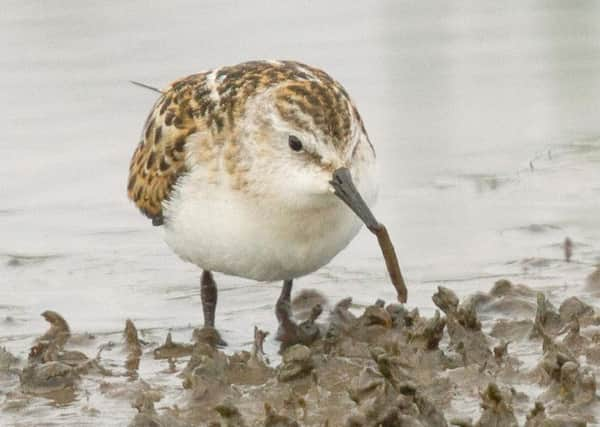Birdwatch: Migrating waders put in a stint


As its name suggests this is the smallest of the common passage waders in Europe, only the size of a house sparrow and weighing in at 0.78 of an ounce.
Little stints are often seen among flocks of dunlins and can be picked out by their daintier build and short straight bills.
Advertisement
Hide AdAdvertisement
Hide AdThey breed on the High Arctic tundra of Norway and Russia, laying three to five eggs in a scrape on the bare ground.
Numbers seen on passage vary from year to year depending on the availability of lemmings.
In a good lemming year, when these rodents are plentiful, predators have a plentiful food supply and the survival rate of little stints and other waders is higher as a result. When the lemming population slumps, so do wader numbers as they become an alternative prey.
Little stints arrive in southern Africa and south Asia in October but a few vagrants move even further, as far south as Australia and the Pacific coast of America.
Advertisement
Hide AdAdvertisement
Hide AdThere is a poem by Vernon Watkins, Flying Machines by Little Stint, in which a little stint compares its own journey with Louis Bleriot’s first flight in a heavier than air aircraft across the Channel in 1909.
There were huge celebrations over Bleriot’s flight of ‘20 miles or more’ but the little stint says: ‘Yet I when called to make my flight Have slipped off in an Arctic night. And lightly flown o’er land and sea. The only engine carrying me. My heart no bigger than a shilling. Which for twelve thousand miles is willing.’
True not only of little stints but millions of other birds about to begin their own epic journeys to Africa in the coming weeks.
A slightly larger relative of the little stint, a Temminck’s stint, was seen at Stone Creek on the Humber while four curlew sandpipers were at Beacon Ponds and wood sandpipers at Thornwick Bay, Kilnsea and Spurn.
Advertisement
Hide AdAdvertisement
Hide AdA squacco heron was seen and photographed at the Far Ings reserve, Barton-upon-Humber but, true to form, has been highly elusive while up to 15 spoonbills have been seen at Alkborough Flats.
A black tern has continued to be seen at Swillington Ings, Leeds.
Ospreys are also starting to move south from breeding sites in Scotland, the females leaving first while the males finish off the job of rearing their young.
The journey to West Africa takes from four to six weeks, much slower than the spring passage north where there is the need to secure a breeding territory.
Advertisement
Hide AdAdvertisement
Hide AdThere is time to stop off at places where there is a plentiful supply of fish and an osprey has spent several days around a trout farm at Ellerburn, North Yorkshire while others have been seen in the Dearne Valley, and Hatfield Moors, South Yorkshire and Ogston reservoir in Derbyshire.